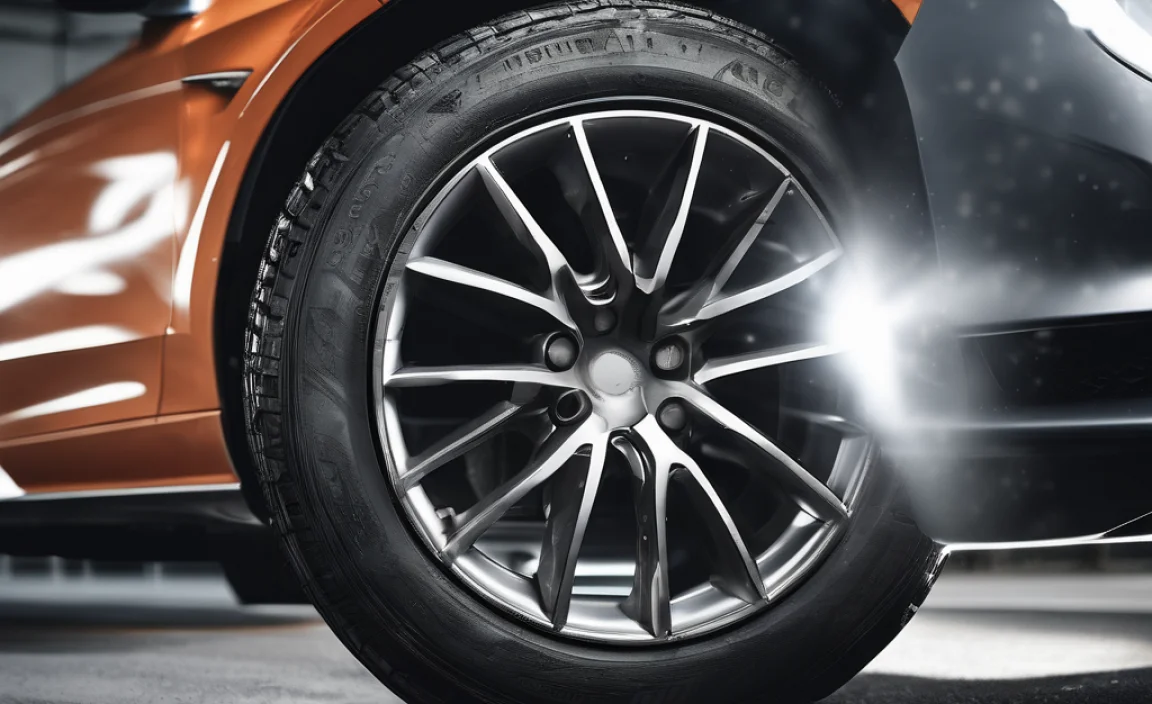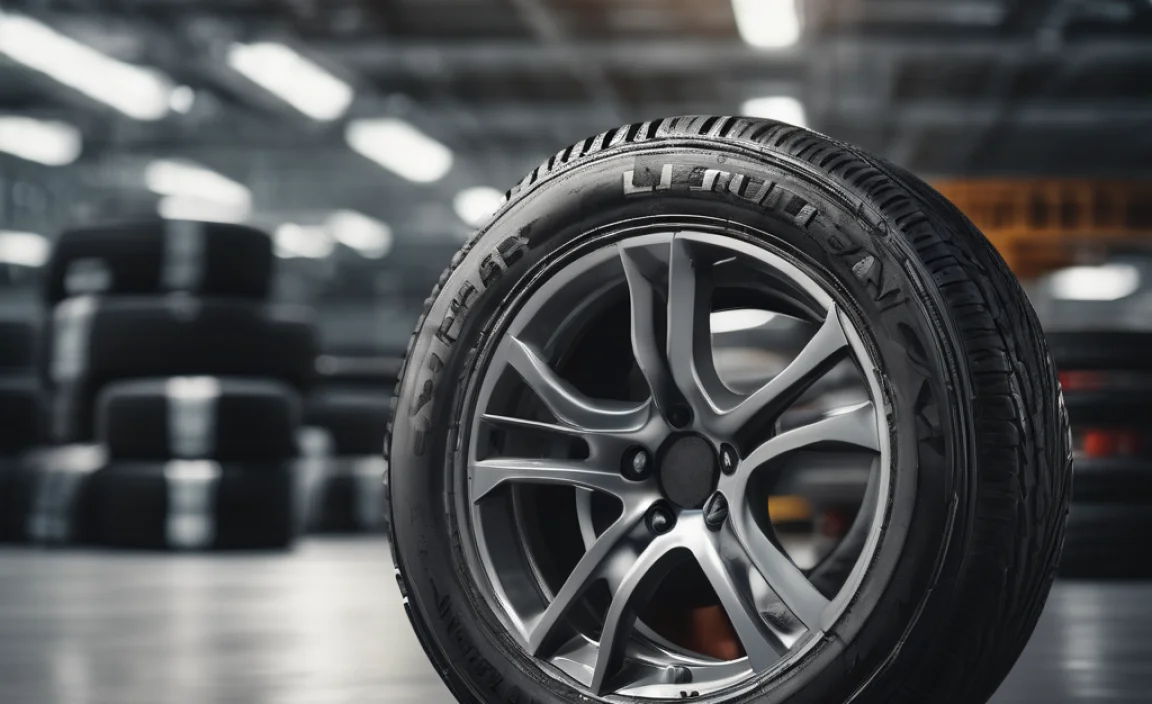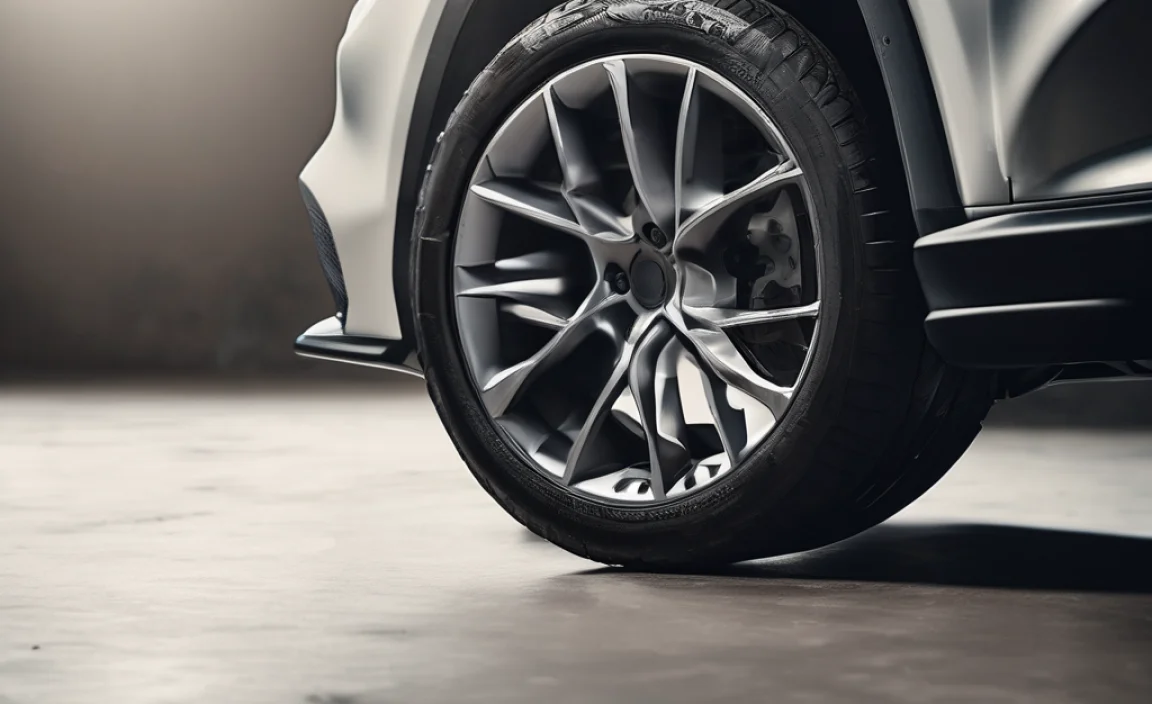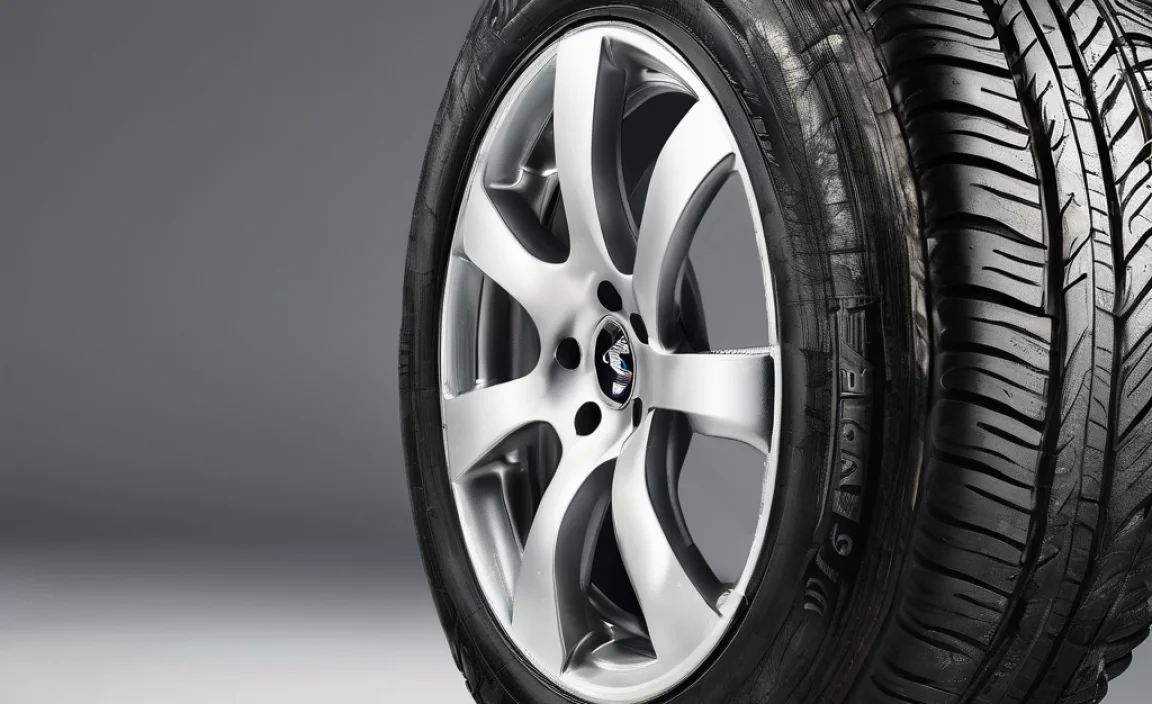Glad you asked! The cost of GLA-Class tires typically ranges from $150 to $350 per tire, depending on brand, size, and quality. Budgeting for replacement tires is crucial for safety and performance; this guide breaks down the factors influencing price and helps you find the best value.
Is your Mercedes-Benz GLA-Class due for new tires? Don’t let the thought of a tire bill stress you out! Your tires are the only thing connecting your luxurious ride to the road, and keeping them in top shape is super important for safety and how your car feels to drive. It can be a bit confusing to figure out exactly what you need and how much it should cost. But don’t worry, I’m here to help you navigate the world of GLA-Class tires and understand the costs involved. We’ll break it down simply so you can make a smart choice without any confusion. Read on to find out all you need to know!
Understanding GLA-Class Tyre Costs: What You Need to Know

When it comes to replacing the tires on your Mercedes-Benz GLA-Class, understanding the cost factors is key to making an informed decision. Nobody wants to overpay, but we all want safe, reliable tires that perform well. Let’s dive into what influences the price tag.
Factors Affecting GLA-Class Tyre Prices
Several elements come into play when determining the cost of GLA-Class tires. Think of it like buying anything else – quality, brand, and specific features all add to the price.
Tyre Size: GLA-Class models come with various wheel sizes, and larger wheels generally mean more expensive tires. The specific aspect ratio (the height of the sidewall) and width also play a role. You’ll find the correct tire size on the sticker inside your driver’s side doorjamb or in your owner’s manual. Always stick to the recommended sizes for your specific GLA-Class model for safety and optimal performance.
Brand Reputation and Quality: Established tire brands known for their research and development, like Michelin, Continental, Pirelli, and Bridgestone, often come with a higher price tag. This is usually due to superior materials, advanced tread designs for better grip, longevity, and noise reduction. Cheaper, lesser-known brands might seem tempting, but they may compromise on performance, durability, or safety.
Tyre Type (Performance vs. All-Season vs. Winter):
Summer/Performance Tyres: These are designed for optimal grip and handling in dry and wet conditions during warmer months. They often feature stiffer sidewalls for better cornering. They typically cost more.
All-Season Tyres: A popular choice for many drivers, all-season tires offer a balance of performance in varied conditions, including light snow. They are designed for longevity and a comfortable ride, making them a good middle-ground option for cost and performance.
Winter Tyres: For those living in areas with significant snow and ice, winter tires are essential. They use special rubber compounds and tread patterns to provide superior traction in cold temperatures and slippery conditions. These can be more expensive than all-season tires.
Run-Flat Technology: Many Mercedes-Benz vehicles, including some GLA-Class variants, are equipped with run-flat tires. These tires allow you to drive a limited distance at a reduced speed even after losing all air pressure, thanks to reinforced sidewalls. This added technology typically increases the cost of the tire.
Specialty Features: Some tires come with additional features like noise-reduction technology (often indicated by symbols like MOExt or NPR), self-sealing compounds, or specific tread patterns for a quieter, more comfortable, or more fuel-efficient drive. These enhancements can also add to the overall price.
Estimated Cost Ranges for GLA-Class Tyres
To give you a clearer picture, here’s a general idea of what you might expect to pay for a single tire, excluding installation costs. Keep in mind these are estimates and actual prices can vary.
| Tyre Brand Tier | Estimated Price Per Tyre (USD) | Typical Characteristics |
|---|---|---|
| Premium (e.g., Michelin, Continental, Pirelli) | $200 – $350+ | Top-tier performance, longevity, advanced technology, quiet ride, often run-flat capable. |
| Mid-Range (e.g., Goodyear, Bridgestone, Hankook) | $160 – $250 | Good balance of performance, durability, and value. Reliable all-around options. |
| Budget-Friendly (e.g., Cooper, Falken, Firestone – select models) | $130 – $190 | More affordable, suitable for basic needs, may compromise slightly on longevity or ultimate performance. |
| Economy/Value Brands | $100 – $150 | Basic functionality, shortest lifespan, may have noticeable compromises in ride comfort or noise. |
Note: Prices are for the tire itself and do not include mounting, balancing, alignment, or disposal fees.
Budgeting for Full Replacement: Beyond Just the Tyres

When it comes to replacing your GLA-Class tires, it’s wise to think beyond just the sticker price of the tires themselves. There are other costs involved that can add up, so it’s good to have an “essential budget” in mind.
Installation Costs: What to Expect
This is where many people find hidden costs. Simply buying tires online and expecting them to magically appear on your car isn’t realistic. You’ll need a professional to fit them properly.
Mounting and Balancing: This is the process of attaching the new tire to your wheel rim and ensuring it spins smoothly and evenly. Most reputable tire shops will charge for this, usually per tire. Expect to pay between $25 – $50 per tire for mounting and balancing.
Wheel Alignment: This is crucial! After new tires, especially if your old ones were unevenly worn, a wheel alignment ensures your wheels are pointing in the correct direction. This prevents premature tire wear, improves handling, and maximizes fuel efficiency. A standard alignment can cost anywhere from $75 – $150. It’s a worthwhile investment to protect your new tires.
Tyre Disposal Fees: Most shops charge a small fee to safely dispose of your old tires. This is usually around $5 – $10 per tire. Environmentally responsible disposal is important!
Valve Stems: If your tires have Tire Pressure Monitoring System (TPMS) sensors, you may need new valve stems or even new sensors if they are old or faulty. This can add $10 – $30 per sensor/stem unit.
Total Installation Budget Estimate: For four new tires, you might budget an additional $200 – $400 for professional installation, balancing, alignment, and disposal fees.
DIY vs. Professional Installation: Safety First!
While the temptation to save money by doing it yourself might be there, installing tires is a task best left to professionals for several reasons:
Specialized Equipment: Tire shops have machines to safely remove old tires, mount new ones onto the rims without damage, and balance them correctly using precise weights.
Safety: Improperly mounted tires can lead to dangerous blowouts or poor handling. Correct balancing is essential for a smooth, safe ride and to prevent wear on your car’s suspension.
TPMS: Modern cars like the GLA-Class have TPMS sensors inside the wheels. Professionals know how to handle these delicate sensors to avoid damage and ensure they are recalibrated correctly.
Warranty: Many tire manufacturers require professional installation to maintain the tire’s warranty.
So, for GLA-Class owners, prioritizing professional installation is a smart move for both safety and the longevity of your investment.
Finding the Best Value: Tips for Savvy Shoppers

You don’t have to break the bank to get great tires for your GLA-Class. Here are some strategies to help you find the best value without compromising on quality or safety.
1. Research, Research, Research!
Before you even step into a shop or browse online, do your homework.
Know Your Tyre Size: As mentioned, check your driver’s side doorjamb sticker or owner’s manual. Common GLA-Class sizes include 235/50R18 or 235/45R19, but always confirm for your specific model year.
Read Reviews: Look for reviews from reputable automotive sources and other Mercedes-Benz owners. Websites like Tire Rack, Consumer Reports, and dedicated Mercedes-Benz forums can be goldmines of information. Pay attention to reviews that discuss longevity, wet/dry grip, noise levels, and ride comfort.
Consider Your Driving Habits: Do you drive mostly in the city? On highways? Do you encounter varied weather conditions? Your driving style and typical environment should influence your tire choice. For example, if you live somewhere with harsh winters, dedicated winter tires might be more cost-effective in the long run than relying on all-seasons that struggle in deep snow.
2. Shop Around: Online vs. Local
Both online retailers and local tire shops have their pros and cons.
Online Retailers (e.g., Tire Rack, SimpleTire, Amazon):
Pros: Often have a vast selection, competitive pricing, and detailed reviews. You can often find deals and sales.
Cons: You don’t get to physically see or touch the tires before buying. You must factor in shipping costs and the cost of professional installation at a local shop (many online retailers have partnerships with local installers, which can simplify this).
Local Tire Shops (e.g., Discount Tire, Pep Boys, independent garages):
Pros: You can often see the tires, get expert advice face-to-face, and sometimes get same-day installation. They handle the entire process from sale to installation.
Cons: Prices can sometimes be higher than online, and selection might be more limited to brands they carry.
Pro Tip: Get quotes from both online and local sources. Sometimes, a local shop can price-match or offer package deals (tire + installation) that are very competitive.
3. Look for Sales and Promotions
Tire manufacturers and retailers frequently offer sales, rebates, and special promotions, especially around holidays.
Manufacturer Rebates: Many brands (Michelin, Goodyear, etc.) offer mail-in rebates that can save you $50 to $100 or more on a set of four tires. Keep an eye on their official websites or ask your tire dealer.
Seasonal Sales: Retailers often have tire sales in spring and fall. This is a great time to buy when you’re preparing for changing weather.
Package Deals: Some shops offer discounts when you purchase tires and installation services together, or when you buy a full set of four.
4. Explore Timed-Wear Indicators (TWIs) and Treadwear Ratings
When comparing tires, pay attention to their Treadwear rating (part of the UTQG – Uniform Tire Quality Grading system). A higher number (e.g., 500 vs. 300) generally indicates a tire that will last longer. While not a direct cost saving, a tire with better treadwear can mean fewer replacements over time, saving you money in the long run. For example, a tire with a Treadwear rating of 600 might last nearly twice as long as one with a rating of 300 under similar driving conditions.
When to Replace Your GLA-Class Tyres
Knowing when to replace your tires is as important as knowing how much they cost. Driving on worn-out tires is incredibly dangerous.
Tread Depth: The most common indicator. The legal minimum tread depth in many regions is 2/32 of an inch (about 1.6 mm). However, for optimal safety, especially in wet conditions, it’s recommended to replace tires when tread depth reaches 4/32 of an inch. You can check this using a tread depth gauge or the “penny test.” Stick a penny into the deepest part of the tread with Lincoln’s head facing down. If you can see the top of Lincoln’s head, your tread is too low.
Age: Tires degrade over time, even if they have plenty of tread. Most manufacturers recommend replacing tires that are 6 years old or older, regardless of appearance. Check the tire’s sidewall for the DOT code, which includes the manufacture date (last four digits indicate week and year, e.g., ‘1522’ means the 15th week of 2022). You can learn more about tire aging from organizations dedicated to vehicle safety.
Visible Damage: Cracks, bulges, cuts, or punctures in the sidewall or tread are all signs that a tire needs immediate replacement for safety reasons. Any damage to the sidewall cannot be safely repaired.
Replacing tires proactively, rather than waiting until they are bald or damaged, ensures you maintain the safety and performance of your GLA-Class and avoids unexpected breakdowns.
Considering the “Essential Budget” for Your GLA-Class Tyres

So, what’s the “essential budget” for your GLA-Class tires? It’s not just a single number; it’s a range that accounts for quality, installation, and peace of mind.
Let’s break down a potential four-tire replacement scenario, assuming you are opting for mid-range to premium tires, which is often recommended for a Mercedes-Benz:
Scenario: Replacing Four Mid-Range to Premium Tyres
Cost of Tyres (4 x ~$200-$300): $800 – $1200
Installation Costs (Mounting, Balancing, Disposal): $100 – $200 (for 4 tires)
Wheel Alignment: $75 – $150
Total Estimated Budget: $975 – $1550
This range provides a realistic picture. You might find deals that bring it closer to the lower end, or choose top-of-the-line tires and extensive services that push it towards the higher end.
Budgeting Tip: When you notice your tires are getting worn, start researching and saving. Don’t wait until you need them urgently, as this often leads to rushed decisions and potentially overpaying.
Frequently Asked Questions (FAQ) about GLA-Class Tyre Costs
Q1: How much does it typically cost to replace all four tires on a Mercedes-Benz GLA-Class?
Replacing all four tires on a GLA-Class usually costs between $800 and $1,550, including mid-range to premium tires and professional installation (mounting, balancing, alignment, and disposal fees). The exact cost depends heavily on the tire brand, size, type, and your location.
Q2: Are run-flat tires for the GLA-Class more expensive?
Yes, run-flat tires are generally more expensive than standard tires. This is due to the reinforced construction that allows you to drive a limited distance after a puncture, offering convenience and safety. Expect to pay an additional $20-$50 per tire for run-flat technology.
Q3: Is it cheaper to buy tires online or from a local shop?
It varies. Online retailers often have lower base prices, but you must factor in shipping costs and the expense of professional installation at a separate shop. Local shops might have slightly higher tire prices, but they often offer package deals that include installation, making the total cost competitive. It’s best to compare quotes from both.
Q4: What is the average cost of wheel alignment for a GLA-Class?
A standard four-wheel alignment for a GLA-Class typically costs between $75 and $150. This is a crucial service to perform whenever you install new tires to ensure even wear and optimal handling.
Q5: How often should I replace the tires on my GLA-Class?
Tires should be replaced when the tread depth reaches 4/32 of an inch for safety, or if they are more than 6-10 years old, regardless of tread depth (check manufacturer recommendations). Regular visual inspection for wear and damage is essential.
Q6: Can I use cheaper, non-Mercedes specific tires on my GLA-Class?
While you can use tires that are not specifically branded as “Mercedes-Benz approved” (like MO, MO1, MOE markings), it is crucial to ensure they meet the manufacturer’s specifications for size, load index, and speed rating. Using the wrong tires can affect your car’s safety, handling, and ride comfort, and may even void your warranty. Always prioritize tires engineered for your vehicle’s requirements, even if they aren’t branded with the star.
Q7: Does the type of tire (all-season, summer, winter) significantly impact cost for a GLA-Class?
Yes, the type of tire significantly impacts cost. Performance summer tires and specialized winter tires are often more expensive than standard all-season tires due to their advanced compounds and tread designs. All-season tires typically offer a good balance of performance and cost for everyday driving in moderate climates.
Conclusion: Smart Spending for Safe Driving
Keeping your Mercedes-Benz GLA-Class running smoothly and safely means paying attention to its tires. While the cost of GLA-Class tires can seem like a significant expense, understanding the factors that influence price – from brand and size to installation and alignment – empowers you to budget wisely.
By researching your options, shopping around, looking for deals, and always prioritizing professional installation for safety and proper fit, you can secure excellent tires for your GLA-Class without overspending. Remember, your tires are your car’s direct link to the